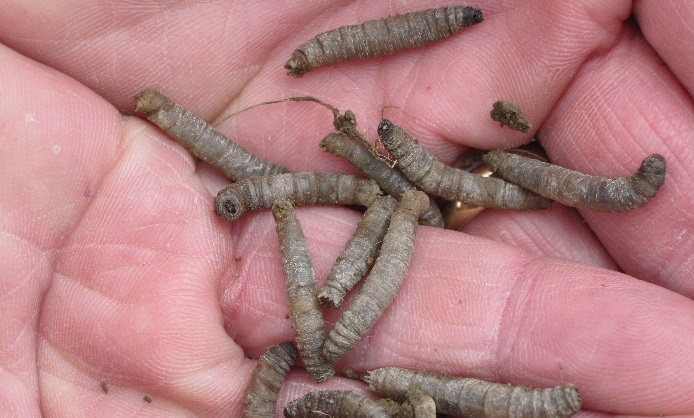
Leatherjacket populations have rocketed this spring as these grassland pests – the larvae of the crane fly or daddy long-legs, enjoyed last year’s wet summer and survived in great numbers through the milder winter.
Researchers at the Scottish Rural University College (SRUC) have counted 2 million grubs/ha in grass fields – twice the level expected at this time of year. They sever the grass at, or just below soil level, killing the plant. The damage they do now, will further reduce silage yields in crops already struggling to grow after the late start to spring.
“Leatherjackets are voracious feeders and can eat an amount equal to 35% of their initial weight every day,” explains Dow AgroSciences grassland agronomist David Roberts.
“Having one million leatherjackets/ha can reduce grass dry matter yields by as much as 2 tonnes/ha – so if there are more than this, yield losses could be significant. In a year when filling up silage clamps is a priority, having fields full of leatherjackets is the last thing farmers need.”
The grubs have thick, grey skins and no legs or distinct heads. They can grow up to 5cm long. The adult flies lay up to 250 eggs between July and September which hatch within two to three weeks. The young larvae feed aggressively from the autumn onwards – new-sown leys are particularly vulnerable and can be completely destroyed. The larvae pupate and turn into crane flies in late May and June.
Look out for birds
Signs to look out for are a lot of daddy long-legs from August to October, flocks of rooks, crows and other birds feeding in grass fields, and yellowing or bare patches in the grass in spring.
“If farmers can find two to three leatherjackets in the top 2-3cm of soil, it will be economic to treat the field with an insecticide such as Dursban WG, at a rate of 1kg/ha, bearing in mind all the application guidelines recommended by the ‘Say No to Drift’ campaign,” Mr Roberts advises.
“Treatments in autumn will give the best response – but with such high populations out there at the moment, treating now will also be worthwhile to protect grass yields this summer.”
